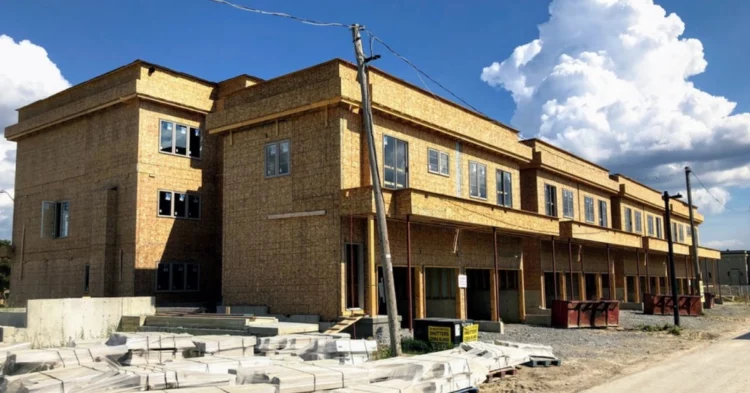A Closer Look at the Controversial Building Faster Fund
Ontario is preparing to make changes to a municipal housing fund that many local leaders say penalizes cities and towns for factors outside of their control. Housing Minister Rob Flack announced Tuesday during a speech at the Association of Municipalities of Ontario (AMO) conference in Ottawa that the government is set to “extend and improve” the Building Faster Fund—a key provincial incentive tied to municipal housing targets.
“That includes ensuring the fund reflects the new market we are in, as well as encouraging municipalities to cut development charges and get shovels in the ground faster on key infrastructure projects,” Flack said.
Table of Contents
How the Building Faster Fund Currently Works
The Building Faster Fund rewards municipalities that meet at least 80 percent of housing targets set by the province. Municipalities that qualify receive funding to support “housing-enabling infrastructure”—money often symbolically handed out via novelty cheques by Flack or Premier Doug Ford.
However, only 23 out of 50 municipalities reached their assigned thresholds this past year, a sharp decline from the 32 that met the mark the year before.
Municipal Leaders Say System Is Flawed and Outdated
Several municipalities have expressed frustration that they are being measured based on the number of housing starts—essentially when construction begins—rather than approvals or permits issued. Since municipalities don’t control when builders choose to break ground, many feel they are being judged unfairly.
Clarington, Ontario is one such example. The town missed out on what Mayor Adrian Foster said would have been $4 million in funding—by just 13 housing units.
“We can’t force developers to pull the permits even after we’ve approved those permits,” Foster said in a recent interview. “We’re being held accountable for something we can’t control.”
A Persistent Problem: Faulty Housing Start Data?
Foster also pointed to inaccurate data from the Canada Mortgage and Housing Corporation (CMHC) as a contributing factor. He claims Clarington actually met the 80 percent threshold, but was wrongly evaluated based on an undercount from CMHC.
“It is déjà vu all over again,” Foster said, adding that Clarington had faced the same issue the previous year and initially didn’t qualify for funding.
Ontario’s Broader Housing Crisis: Falling Behind on Ambitious Targets
Premier Doug Ford’s government has set a bold goal of building 1.5 million homes by 2031, but the province is falling behind. Ontario only achieved about 75 percent of its interim target of 125,000 homes in 2024—and even that figure includes retirement suites, student housing, and other non-traditional residential units added to the count.
Meanwhile, CMHC data released Monday showed a 28 percent drop in housing starts in Ontario compared to the same month the previous year, despite a modest national increase of 4 percent.
New Funding Announced to Support Municipal Housing Initiatives
In response to growing pressure, Ford also used the AMO conference to announce a fresh $1.6 billion investment into the Municipal Housing Infrastructure Program, which helps municipalities develop infrastructure necessary to support housing.
What’s Next? Consultation and Reform on the Horizon
Minister Flack confirmed that Ontario will consult directly with mayors and the Association of Municipalities of Ontario to revise the Building Faster Fund. While details are still emerging, municipal leaders are hopeful that future criteria will better reflect their actual performance and effort in advancing housing projects—even if builders delay starting construction.

